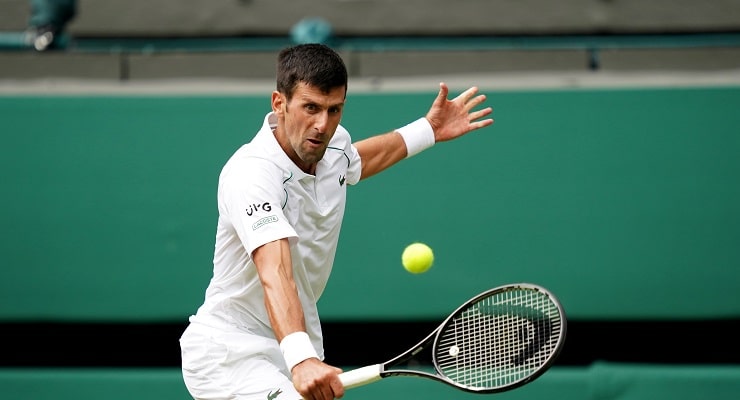Tennis rackets have come a long way since the game was first widely played towards the end of the 19th century. Here, we take a look at how the equipment used for the most popular of the various racket sports has changed and developed over time.
Basic Early Models
When the game first started to gain popularity in the 1870s in England, rackets were, predictably, very basic.
The first rackets were long-handled wooden ones with lopsided heads, much like the ones used in the older sport of real tennis, which was played from the 16th century and beyond and seen as the forerunner to the sport that we recognise today.
As tennis grew in popularity and developed, those first real tennis-style rackets faded out and symmetrical racket frames were becoming commonplace by the time of the first Australian Open in 1905.
Throughout the early years, most rackets were made of laminated wood, featuring heads of around 65 square inches. There were some experiments with different materials, such as a 1920s racket by Dayton made of metal, but largely from the 1920s and through to the 1970s, wooden rackets were used widely.
Steel Rackets Emerge
In the late 1960s, Wilson brought out a steel racket after having purchased the design from 1920s star Rene Lacoste, called the T-2000, which featured wire wound around the frame to make string loops.
Top American player Jimmy Connors was one of the first players to use a steel racket regularly, but many professional players still preferred to utilise the traditional wooden ones amid complaints the newer models were responsible for causing more injuries.
By the mid 1970s, however, things were beginning to change and the use of aluminium in tennis rackets was starting to appear. A company called Weed made the first American ‘oversized’ racket around that time and another, Prince, took the oversized racket concept further making a very popular racket with a head size of approximately 110 square inches.
That led to various other non-standard head size rackets being introduced, such as mid-size 85-90 square inch models and 95-98 square inch mid-plus racket heads.
Fibreglass and Graphite Appear
Also in the 1970s, we started to see fibreglass and graphite rackets on court with this type of material allowing stiffness, but there were issues with the early graphite rackets as they were still quite heavy, with little or no vibration dampening. In the early 1980s, other materials were added to the graphite composite, including ceramics, boron, and titanium.
Chris Evert helped popularise a graphite racket which contained 20 per cent Kevlar in the mid 1980s and, as technology and research grew, Dunlop then brought out the Dunlop 200g in the late 1980s. This was the first of the lighter, more powerful rackets – and was first used by John McEnroe. This graphite racket was injected with foam to make it lighter and allow for more vibration dampening.
New Technology
The introduction of titanium technology by Head was seen as a significant milestone in 1998 as it meant rackets could be ultralight, powerful and vibration dampening.
The modern-day racket is made from a graphite composite with plenty of new technology packed in. Current rackets are designed, for the average club player at least, with the idea of making the game easier and more comfortable and there remains on the market a variety of head shapes, sizes and rackets made with different materials, all available in a range of different weights and levels of vibration dampening.
Current trends have led rackets to generally be bigger, lighter, stiffer, with more open string patterns and thicker beams, but plenty of club and even some professional players like to play with a racket they have used for several years.
Even as tennis has got faster and players who hit with more racket head speed have got fitter, plenty still use an older racket because it just feels good and they know they can rely on it.





